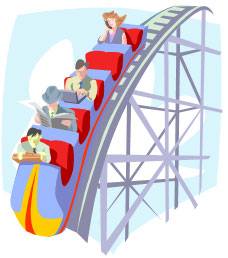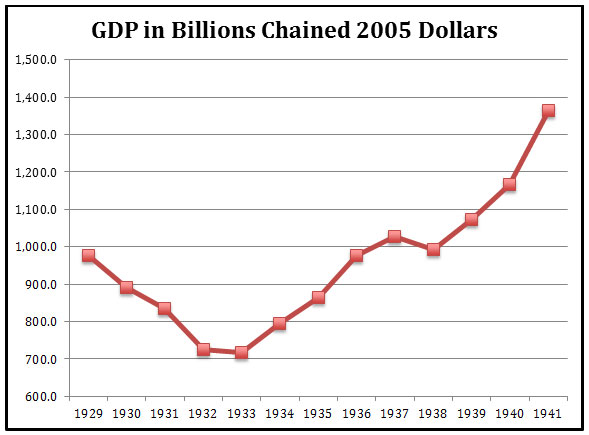

As mentioned in the previous section, not all of the New Deal programs were successful. President Roosevelt experienced a roller coaster ride as president in terms of his popularity.
When President Roosevelt ran for reelection in 1936, not only did he win in a landslide, but the Democrats won so many seats in Congress that people were wondering if the Republican party was about to become irrelevant. Then, in the mid-term elections of 1938, the Republicans executed a near total-reversal. The only safe Democrat seats were in the "solid South."
Two short years later, in 1940, Franklin Delano Roosevelt (FDR) became the first president in U.S. history to be elected to a third term in office.
Examine the following graph that shows the Gross Domestic Product (GDP), or the total value of all goods and services produced in the economy, during the Great Depression. Use it to explain the facts in the above paragraphs in your notes.
Interactive popup. Assistance may be required.
In 1936, the U.S. economy had been improving substantially. Since FDR took office in 1933, it had just about reached the level where it was in 1929. Then, from 1937-1938, it declined again. This is why economists call the Great Depression a "double dip" depression because the economy got better and then got worse again. By 1940, the United States' economy was clearly booming, helping to explain FDR's reelection.
 Source: Bureau of Economic Analysis
Source: Bureau of Economic Analysis
→ Reflect further: Economic growth certainly explains part of FDR's reelection in 1940. What other factor explains the public taking the unprecedented step of electing a president to a third term?
Interactive popup. Assistance may be required.
In 1939, World War II had started in Europe. Though the United States would not join the fighting until the Japanese bombed Pearl Harbor in December 1941, FDR convinced the American people that the danger was too great to change leaders in 1940.